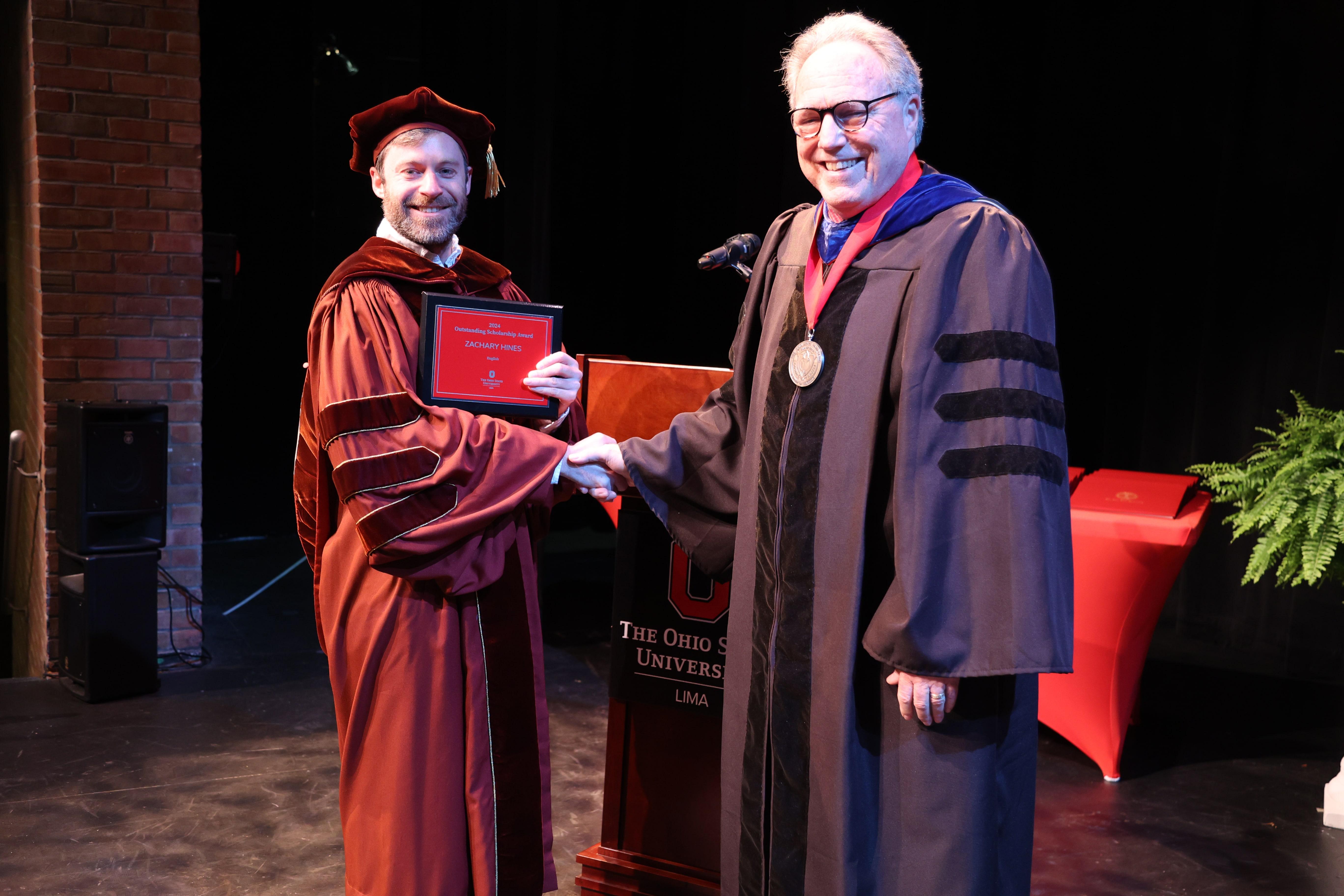Dr. Zachary Hines, assistant professor of English, stands out as a model of scholarly excellence and innovation at The Ohio State University at Lima. His seminal work on medieval manuscripts not only challenges but enriches our understanding of the English literary canon, bridging the gap between historical artifacts and contemporary analysis. Dr. Hines talks more about his work.
Give us the elevator speech on your area of scholarship/research.
As a scholar of medieval literature and book history, my research focuses on how readers used, and continue to use, medieval books. I’m currently writing a monograph about the post-medieval histories of several famous, canonical texts in Middle English. Each chapter focuses on a specific material intervention by a reader or institution that reshaped the physical form of the book (e.g. the British Museum separating Latin texts from vernacular ones; a reader adding apocryphal material to a Canterbury Tales manuscript). These changes, I argue, ultimately have informed the reception and reputation of the literary texts they preserve.
Why is this area exciting for you to study?
The processes of uncovering and elucidating new histories of reading and writing is always thrilling to me as someone who loves books. I want to understand how and why texts composed hundreds or even thousands of years ago have managed to survive. By studying the materiality of books as artifacts, I believe that we can learn how people in the past encountered these texts as well as how these discoveries should inform our experiences of reading medieval literature today.
Where do you do your research?
I am privileged to work in a discipline (i.e. medieval studies) where research often requires visits to distant libraries to consult ancient and sometimes forgotten books. Most recently, with the support of the Violet I. Meek Endowment for Faculty Scholarly Activity, I spent a week at the Huntington Library in southern California, one of the world’s finest collections of medieval literary manuscripts and early printed books. One underrated joy of research trips is the opportunity they provide to meet with other scholars working at the library, most of whom are not scholars of medieval literature, and to learn about their projects and what they hope to discover in the archive.
What kinds of things are you looking for?
Sometimes, I walk into a reading room knowing exactly what I want to find in the materials I’ve requested to see. Indications of an early modern reader’s engagement with a medieval text, for example, or a structural feature of a book binding require arranging an in-person consultation because these pieces of evidence may not be visible in digital facsimiles or described in a library catalog. Other times, I will have a general sense of what I’m interested in locating (e.g. inky fingerprints, scribal corrections), but I will need to call up a dozen books before I find it. Most frequently, however, I discover something I did not think to look for but which opens up an entirely new avenue of research. The most important lesson I learned in graduate school about working with archival materials was always to turn every page – you never know what you’ll find.
How does your scholarship activity inform your teaching?
I regularly describe the core responsibilities that come with my position (i.e. teaching, research, and service) as mutually informing. I am lucky to have a job where I am paid to be curious. Whether I’m teaching General Education students or experienced English majors, each course I design draws on current scholarship and innovative approaches to the field. And my experiences in the classroom also inform my scholarly activity. In an article forthcoming in the journal New Chaucer Studies: Pedagogy and Profession, I reflect on a recent Ohio State Lima course I taught about the internet subculture “Dark Academia” and its intersections with my research in book history. Surprisingly, I found that many college students share an enthusiasm for traditional forms of education that they feel have become inaccessible to them and prefer modes of learning focused on in-person and offline interactions. In the classroom, students’ enthusiasm to learn about medieval literature and premodern book culture always reinvigorates my own excitement for the discipline.
